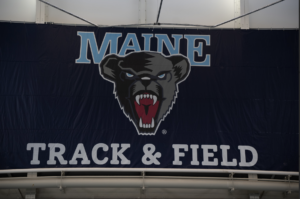Lee Petty’s win at the first-ever Daytona 500 in 1959 catapulted NASCAR into one of the most widely watched and attended sports across the country. From 1971 to 2011, and then beginning again in 2018, the 500 is scheduled to fall on the third Sunday in February.
The race began as the “Daytona Beach and Road Course” at a track that ran off of highway A1A in Ponce Inlet, FL, before intersecting with the beach and running along the coastline. With tracks in 23 different states, fans in almost any corner of the country can easily catch a race. For a majority of us in New England, that track is New Hampshire Motor Speedway in Loudon, New Hampshire – though it cannot compare to the cathedral that is Daytona.
After Petty won the first official race at the track on Feb. 22, 1959, the legend of the Daytona 500 and it’s most successful family had already begun to develop itself. Serving as the first race of the cup series’ season since 1982, a full field of up to nearly 45 drivers take the two-and-a-half mile tri-oval at speeds of over 200 miles per hour, in a 200 lap, 500 mile slugfest.
The Petty family was beyond dominant on the track, with Lee’s son, Richard, racing his red, white and blue STP Plymouth Superbird to the tune of seven different Daytona 500 victories that cemented him as the greatest to take to the track.
Other notable drivers, including Dale Jarrett, Bobby Allison and Jeff Gordon are integral to the history of NASCAR, with each winning at Daytona on three separate occasions. Dale Earnhardt, arguably the most notable and well-known driver in the sport’s history, won his only Daytona 500 victory in 1998 after racing a nearly perfect race for all 200 laps.
Daytona soon became a tragic venue for the Earnhardt’s, as on Feb. 18 2001, on the final lap of the race, Ken Schrader’s number 36 M&M Pontiac clipped Earnhardt’s car in turn four, sending him headfirst into the outside wall at over 150 miles per hour. Earnhardt was killed on impact, sending shockwaves throughout the sporting world, and putting in place new safety measures such as the HANS device, which is standard in all cup series cars. The Earnhardt legacy itself was carried on through his son, Dale Earnhardt Jr., who managed to win the 500 in an emotional 2004 finish, and again in 2014, only a few years before his retirement.
The 2019 Daytona 500 saw those safety measures in action in real time. As the pack raced down the front stretch, nearing the finish line, Ryan Newman’s Ford led the line. While Newman was only a few hundred feet from winning his second Daytona 500 ever, young talent Ryan Blaney accidentally sent Newman into the outside wall, just like what had happened to the late Earnhardt.
Following the impact, Newman’s car careened into the middle of the track, before his upside down Mustang’s driver side was struck full speed by Corey LaJoie’s car, who had been racing for a top five finish. The car flew into the air before sliding down the infield and catching on fire. Thankfully, safety gear installed into each of the vehicles was able to keep Newman safe. He was discharged from a local hospital two days later with no injuries.
Daytona is the Super Bowl for NASCAR fans, and this season the atmosphere will be no different. If you missed the 500, don’t worry, because NASCAR heads back to Daytona for the regular season finale, the Coke 400, on Aug. 27, 2022.





